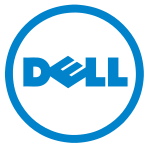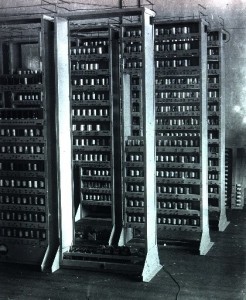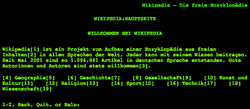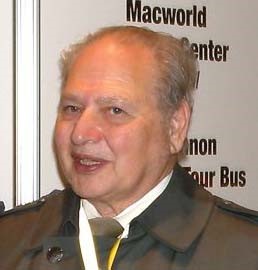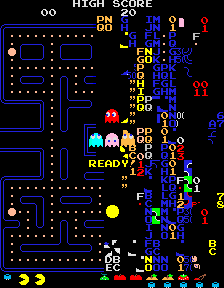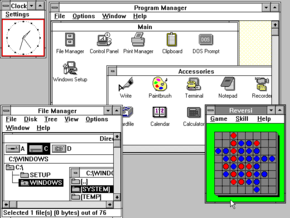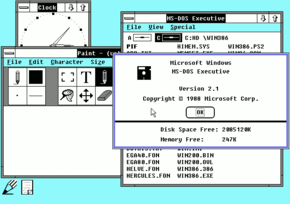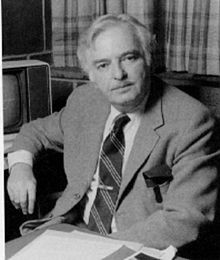- Posted April 25, 2013, 1:52 p.m. - 12 years, 2 months ago
Events in Computing History – May
The month of May has long since been one of significant events in computing history; not only did the first stored program electric computer perform its first calculation, but events such as the first ever WWW conference was held in Switzerland and developers such as John Kemeny were born – co-developer of the BASIC programming language. So what else happened during May that has helped to shape the computers and technology that we see today….
Year: 1984
Event: Dell, the multinational, hugely successful technology solutions company, was founded by Michael Dell whilst he was studying in Austin, Texas.
Interesting Facts
• Dell was originally founded as “PCs Limited” and it wasn’t until 1996 that they started trading online – before that time, Michael Dell was selling the IBM PC-Compatible computers and components from his dorm room.
• The name of the company was changed to “Dell Computer Corporation” in 1988, and then again in 2002 to “Dell Inc”, as by this time the company had expanded beyond just computers into TVs, handheld devices and printers, amongst other devices.
Year: 1949
Event: The first stored program, the EDSAC (Electronic Delay Storage Automatic Calculator), ran and successfully performed its first calculation at the University of Cambridge Mathematical Laboratory, England. As such, it is considered the first complete and fully operational regular electronic digital stored-program computer. The program that it ran was a calculation of a table of squares and a list of prime numbers.
Interesting Facts:
• None of the EDSAC’s components were experimental; as soon as the team at the university has realised it was functional, it began serving their research needs immediately.
• The EDSAC was succeeded in 1951 by the LEO I, which was based on the design of the EDSAC and was the first commercially applied computer in the world. LEO series computers were still in use until 1981, so the EDSAC gave an extremely firm basis for which to build upon for the future.
• A working replica of EDSAC is due to be built and opened to the public at the National Museum of Computing, at Bletchley Park, England, in 2015. The man managing this project, Andrew Herbert, studied under Maurice Wilkes, who built the original EDSAC back in 1940s with his team in the University.
Year: 1946
Event: Japanese multinational conglomerate Sony founded by Akio Morita and Masaru Ibuka, in bomb damaged Tokyo. Then named Tokyo Tsushin Kogyo (Tokyo Telecommunications Engineering Corporation), they built the Type-G – Japan’s first tape recorder.
Interesting Facts:
• The company name was changed to Sony in 1957 as the founders considered they needed a more “romanticised” name to market themselves, as it became apparent the company was growing quite aggressively.
• The name “Sony”, is actually a mix of two words – the Latin word “Sonus”, and the American term “Sonny”, slang for ‘boy’.
• Sony also produced the Walkman in 1979, a term at one point almost synonymous with music players, and was in fact the world’s first portable, handheld, music player
Year: 1917
Event: W.T.Tutte born in Newmarket, Suffolk. Tutte went on to be a renowned code breaker and mathematician involved in the cryptanalysis of the Lorenz cipher at Bletchley Park in the 1940s, which went on to have a significant impact on the Allied victory in Europe. Tutte’s work in code breaking also played a huge part in the development of Colossus, the first programmable electric computer.
Interesting Facts:
• The author Blanche Descartes is actually a pseudonym used by a collaborative group of English mathematicians, including Tutte. Under this name, they produced books on a range of subjects, including poetry and mathematical humour.
• Tutte also played an integral part of solving the problem of squaring the square, alongside the same 3 friends who he used the Blance Descartes pseudonym with.
• Tutte won a range of awards and honours for both his work in WW2 and also later on with his studies in mathematical theories. These include being appointed a Fellow of the Royal Society of London, an officer of the Order of Canada, and the CRM-Fields-PIMS prize.
May 14th
Year: 1991
Event: The second ever web browser, LMB (Line Mode Browser), was released.
Interesting Facts:
• The LMB was also known as just the www browser and was the first browser that could be used across several different operating systems. Developed by W3C/CERN, it could be used not only on different OS’ but also on different types of computer terminals.
• Initial development only took a month – it started in Nov-90 and by December the browser, although not complete, was able to be demonstrated in use and then released to a limited audience on VAX, RS/6000 and Sun-4 computers in March 1991 before wider, general release in May.
• The browser didn’t render anything except text and numbers, and had problems with elements such as collapsing whitespace and frames and tables.
May 14th
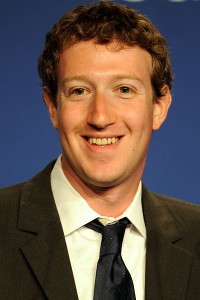
Year: 1984
Event: Mark Zuckerberg, founder of Facebook, born in White Plains, New York.
Interesting Facts:
• Mark has been the centre of much controversy surrounding the true founders of the popular social networking site, Facebook, and a film, The Social Network, came out in 2010 depicting this story.
• Zuckerberg actually began writing software in middle school; his talent was so great that his father hired a college tutor to teach him programming, after he learnt Atari BASIC programming at home.
• It has been noted that Zuckerberg actually built a messaging type of program called “ZuckNet” that he used domestically in his own home, a year prior to AOL’s Instant Messenger public release. He built this to link all of the computers in his home together, to aid his father’s dental surgery.
May 15th

Year: 1891
Event: Philips founded in Eindhoven by Gerard Philips and his father, Frederik, then known as The Philips Company.
Interesting Facts:
• Gerard Philips also founded the Philip Sport Vereniging (Philip Sports Association), along with his brother Anton. This formed the baseline for the professional football department to develop it into the independent Philips Sport Vereniging N.V (widely known as PSV Eindhoven), a sports club based in Eindhoven, the town where Philips was founded.
• The original products manufactured by Philips were carbon-filament lamps and other electro-technical products.
• The factory in Eindhoven where Philips were first based was turned into a museum dedicated to light sculpture and art, although this has now been renovated and relocated to a different part of town.
Year: 1934
Event: Ronald Wayne, co-founder of Apple Inc, born in Cleveland, Ohio.
Interesting Facts:
• Apple Computer, as Apple was originally named, was founded on April 1st 1976 and Ronald Wayne was brought in initially to be the “adult supervision” of the founders, undertaking legal responsibilities such as the creation of the original partnership agreement between the three men (Ronald Wayne, Steve Jobs and Steve Wozniak).
• Wayne also drew the first Apple logo and wrote the Apple I manual
• Wayne only remained with Apple for 2 weeks after the company was founded; on April 12, 1976, he sold his 10% stock for $800 as he felt the venture was too risky and he felt too old to keep up with the younger mindset of the other two men.
May 19th
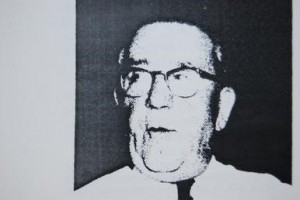
Year: 1890
Event: Herbert Bell, co-founder of Packard Bell, born in Burlington, Wisconsin
Interesting Facts:
• Herbert Bell, also known as Herb, founded the business alongside Leon Packard as a maker of consumer radios. He was also the part-owner of a company called Jackson Bell Co in LA, although this closed in 1933.
• Packard Bell manufactured some of the earliest computers available commercially, including the PB 250, which was the last machine to to be, in part, based on Alan Turning’s original designs for the NPL Pilot ACE computer, one of the first computers built in the UK.
• Herbert’s mother had problems reading tuning dials on conventional radios, so Bell came up with the idea of stationizing the dials on their radios, so all of the major west coast US and Canadian call letters for radio stations were printed in their proper places on the dials. This stopped in 1950, as Packard Bell expanded out to North America and this became untenable.
May 20th
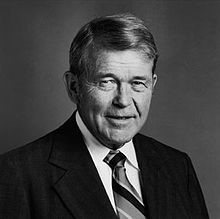
Year: 1913
Event: William Redington Hewlett, co-founder of Hewlett-Packard, born in Ann Arbor, Michigan
Interesting Facts:
• Having founded HP with acquaintance David Packard, the two men really believed in and pushed their vision of a company culture, which later became known as the HP Way, a corporate culture very focused on employee wellbeing and was proud to say it nurtured and respected the staff in the company.
• Hewlett and his wife, Flora Lamson Hewlett, founded the William and Flora Hewlett Foundation, which is a grant-giving foundation supporting educational and cultural institutions, as well as working to advance certain environmental and social issues.
• As well as his work with HP, William was also president of the Institute of Radio Engineers in 1954, which existed from 1912-1962 and has since merged with the American Institute of Electrical Engineers, forming the current Institute of Electrical and Electronics Engineers (IEEE)
Year: 1980
Event: The popular arcade game, Pac-Man, is released in Japan.
Interesting Facts:
• Pac-Man was designed to have no end point, but rather the user could keep playing indefinitely as long as they had one life left at any given point. However, the game has an inbuilt bug that prevents this – on level 255, the subroutine that draws the fruit on the screen (of which in all other levels the maximum is 7 pieces), draws 256, which in turn corrupts the level, causing the screen to fill with random symbols and the user can’t ever eat enough dots to beat the level because of this.
• The first person to score a “perfect Pac-Man” was Billy Mitchell from Hollywood, Florida. A perfect Pac-Man is the situation in which the user completes the game up to level 255 without losing any lives and gaining a perfect score on all other elements such as eating all fruits, dots etc in each maze level. Billy completed this in about 6 hours.
• The enemies in Pac-Man actually have characters and nicknames; these are:
o Red enemy – Shadow/”Blinky”
o Pink enemy – Speedy/”Pinky”
o Blue enemy – Bashful/”Inky”
o Orange enemy – Pokey – “Clyde”
Year: 1990
Event: Presentation program Microsoft Powerpoint is officially launched as part of the Microsoft Office suite
Interesting Facts:
• The initial release of Powerpoint was actually called “Presenter” and it was originally designed solely for the Macintosh computer. Due to trademark issues, it was renamed “Powerpoint” in 1987.
• Dennis Austin and Thomas Rudkin were the developers of Powerpoint, both of which worked at Forethought Inc.
• The terms “death by Powerpoint” and “Powerpoint hell” are often used in situations where users have to sit through a presentation that is perceived as long, boring and tedious, and has been created in Powerpoint.
Year: 1990
Event: Microsoft release Windows 3.0, which became the first widely successful version of Windows and succeeded Windows 2.1x with a revamped interface and new features.
Interesting Facts:
• Windows 3.0 was approved in 1989 as a protected mode Windows development project by Windows company executives who were impressed with the prototype presented by independent Microsoft developers and could see the future needed to involve further graphical enhancements than the current Windows 2.1x could offer.
• Windows 3.0 couldn’t run in full colour on 8086 machines as the VGA and EGA colour drivers required a 286 card, something the 8086s didn’t have.
• Windows 3.0 had 3 different memory modes, a great idea in theory but one that was dropped by Windows 3.1x as it wasn’t needed. These modes were Real Mode, Standard Mode and 386 Enhanced Mode.
Year: 1994
Event: The first ever World Wide Web Conference (WWW1) was held in Geneva, Switzerland
Interesting Facts:
• 380 participants attended the 3 day conference event to discuss and debate standardisation and impact of internet and present day technologies, and the impact on modern society and culture.
• There were 49 formal presentations, 11 workshops and many parallel discussions.
• Partnering bodies include W3C (World Wide Web Consortium), although they do not organise them – they are organised by the IW3C2 (International World Wide Web Conferences Steering Committees).
WWW2013 is to be held 12-17 May, 2013, in Rio De Janeiro, Brazil
Year: 1988
Event: Microsoft release Windows 2.1x, the first version that required a hard disk drive to install the software.
Interesting Facts:
• Windows 2.1x was released less than a year after Windows 2.0, largely due to the upgrades included in the software, including the fact that both versions released could make full of the specific features of both Intel 80286 and 80386 processors.
• The two versions released initially were Windows/286 and Windows/386; the main differences being in the type and spec of computers that the software could run on.
• Windows/386 also included a protected mode kernel, which allowed the system software to use features designed to enhance the operating system’s control of application software, including virtual memory and paging.
Year: 1926
Event: Computer scientist John Kemeny, co-developer of the BASIC programming language, born in Budapest, Hungary
Interesting Facts:
• Kemeny developed BASIC alongside Thomas E. Kurtz, another computer scientist from America.
• The Kurtz and Kemeny team went on to develop the first version of the Dartmouth Time-Sharing System and co-found True BASIC Inc, which they used to market the updated version of the BASIC programming language, True BASIC.
• Kemeny worked as Einstein’s mathematical assistant during graduate school.
Image credits
http://en.wikipedia.org/wiki/File:Pac-Man_split-screen_kill_screen.png
http://en.wikipedia.org/wiki/Dell
http://pixabay.com/en/ball-http-www-crash-administrator-63527/
http://en.wikipedia.org/wiki/File:EDSAC_%2810%29.jpg
http://en.wikipedia.org/wiki/Sony
http://en.wikipedia.org/wiki/Colossus_computer
http://en.wikipedia.org/wiki/Line_Mode_Browser
http://en.wikipedia.org/wiki/Mark_Zuckerberg
http://en.wikipedia.org/wiki/Philips
http://en.wikipedia.org/wiki/Ronald_Wayne
http://en.wikipedia.org/wiki/File:Herbert_Zwiebel_or_Herb_Bell_founder_of_PackardBell_1933-1971.jpg
http://en.wikipedia.org/wiki/William_Redington_Hewlett
http://en.wikipedia.org/wiki/File:Microsoft_PowerPoint_2013_Default_Screen.png
http://en.wikipedia.org/wiki/Windows_3.0
http://en.wikipedia.org/wiki/File:WWW1logo.gif
http://en.wikipedia.org/wiki/Windows_2.1x
http://en.wikipedia.org/wiki/John_Kemeny_%28computer_scientist%29
Latest Articles
-
Our latest testimonial for Infix 6
Dec. 19, 2016, 2:40 p.m. -
Most commonly translated Turkish words
Feb. 6, 2015, 9 a.m. -
Merry Christmas & A Happy New Year
Dec. 25, 2016, 8 a.m. -
New Save PDF to SVG feature introduced to Spire.Office
Dec. 23, 2016, 11:54 a.m. -
Editing educational PDFs – a user perspective
July 21, 2014, 8:03 a.m.



